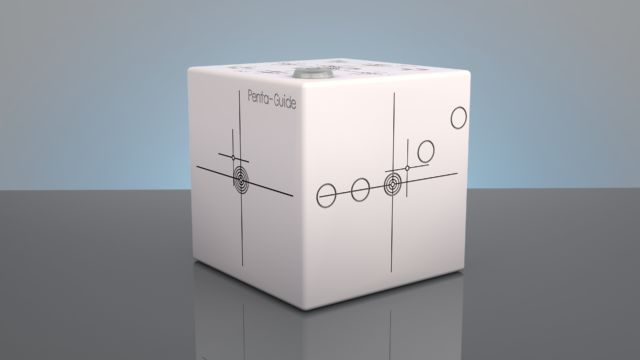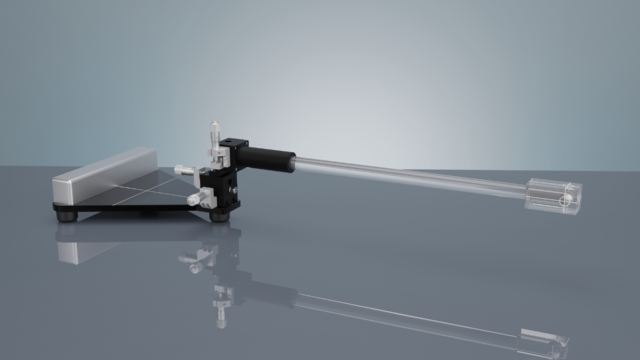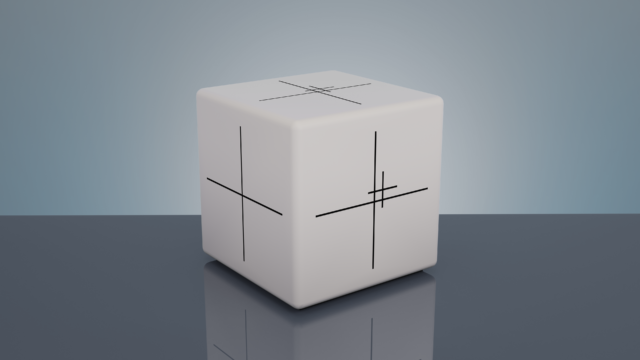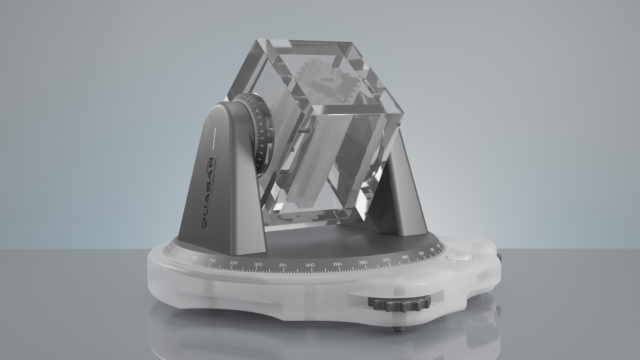
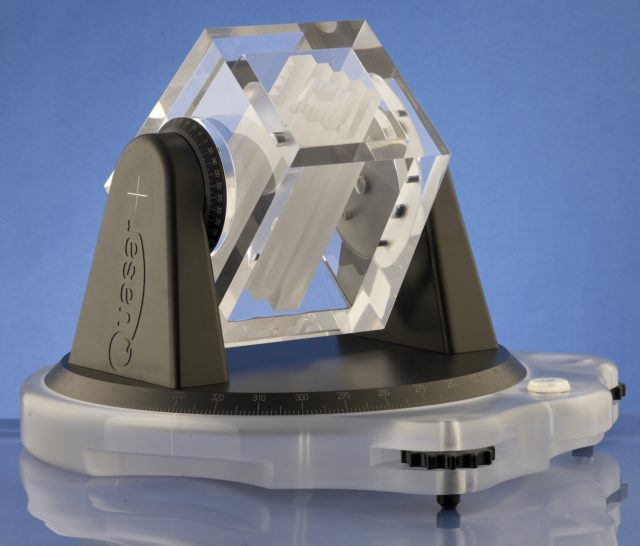
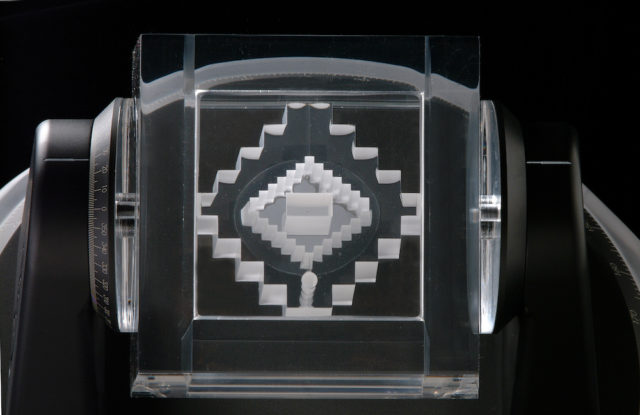
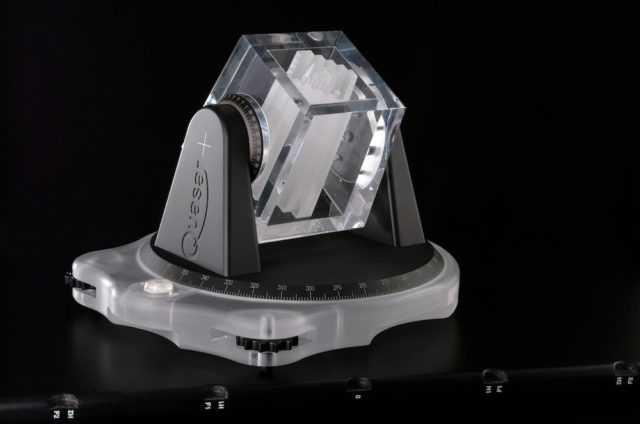
QUASAR™ MLC Beam Geometry Phantom
The QUASAR™ MLC Beam Geometry Phantom is designed to address the complex non-dosimetric, beam geometry and beam imaging features of treatment planning systems.
IMRT and other conformal therapies have led to increased demands on physicists responsible for commissioning and maintaining radiotherapy equipment. AAPM Task Group reports, including TG 66(1), TG 53(2), and TG 51(3), make clear recommendations regarding the importance of both dosimetric and non-dosimetric testing. The QUASAR™ MLC Beam Geometry Phantom is a useful tool in machine commissioning, system characterization, and routine QA protocols.
“The modern RTP process includes many aspects not directly related to dose calculations. Therefore, the RTP QA program must also handle these important non-dosimetric issues… for it is in the non-dosimetric issues that much of the complexity of modern treatment planning systems is manifest.” TG53 Report p. 1782-83 (2)
-
Specifications
- 10 and 15 cm square collimated beam phantom plus 3 mm, 4 mm and 5 mm steps 17 cm long
- Phantom rotates about isocenter on vertical (couch) and horizontal (gantry) axes
- Rotational scale readouts correspond to ICRU 42
- 1 mm diameter stainless steel ball located at the isocenter
- "Z" wire fiducial marker (stainless steel) in base
- 3-point levelling system with built-in level indicator
- Laser alignment marks
- Overall height 28 cm, width 36.6 cm, length 42.5 cm
- Weight 13 kg
- Materials: acrylic, Delrin, nylon, stainless steel markers
- User's Guide with Quality Assurance Worksheets
- Optional Storage Container for shipping and handling
-
Optional Accessories
- 500-2000: Heavy-duty Shipping Case
Features
End-to-end QA
The QUASAR™ MLC Beam Geometry Phantom tests beam integrity from CT simulation and planning to the linear acceleration and portal imaging system. Reveals errors in beam imaging, DICOM transfer, registration, alignment, and orientation.
Compatibility
Perform beam-shaping QA with standard collimators, MLCs, mini MLCs, and micro MLCs from multiple vendors, including Varian, Elekta, Siemens, Brainlab and Radionics. This solution is used for IMRT, 3D conformal RT, and conventional RT.
Intuitive Design
QUASAR™ MLC Beam Geometry phantom’s simple design promotes efficient testing with visual pass/fail features. Verify beam shaping process and alignment accuracy on your LINAC system.
Additional Resources
A Multi-Leaf Collimator Phantom for the Quality Assurance of Radiation Therapy Planning Systems and CT Simulators
MCNIVEN A., KRON T., VAN DYK J., A Multi-Leaf Collimator Phantom for the Quality Assurance of Radiation Therapy Planning Systems and CT Simulators, Int J Radiat Oncol Biol Phys, 60 (2004) 994-1001.
A Quality Assurance Phantom for Three-Dimensional Radiation Therapy Treatment Planning
CRAIG T., BROCHU D., VAN DYK J., A Quality Assurance Phantom for Three-Dimensional Radiation Therapy Treatment Planning, Int. J. Radiation Oncology Biol. Phys., Vol. 44, No. 4, (1999) 955-966.
AAPM Radiation Therapy Committee Task Group 53: Quality Assurance for Clinical Radiotherapy Treatment Planning
FRAASS B., DOPPKE K., HUNT M., KUTCHER G., STARKSCHALL G., STERN R., VAN DYK J., AAPM Radiation Therapy Committee Task Group 53: Quality Assurance for Clinical Radiotherapy Treatment Planning, Med. Phys. 25 (10), October 1998, 1773-1829.
Quality assurance for computed-tomography simulators and the computed-tomography-simulation process: Report of the AAPM Radiation Therapy Committee Task Group No. 66
MUTIC S., PALTA J. R., BUTKER E. K., DAS I. J., HUQ M. S., LOO L. D., SALTER B. J., MCCOLLOUGH C., VAN DYK J., Quality assurance for computed-tomography simulators and the computed-tomography-simulation process: Report of the AAPM Radiation Therapy Committee Task Group No. 66, Med. Phys. 30, (2003) 2762-2792.
AAPM Report no. 72, Basic Applications of Multileaf Collimators, Report of Task Group No. 50, Radiation Therapy Committee
BOYER A., BIGGS P., GALVIN J., KLEIN E., LOSASSO T., LOW D., MAH K., Yu C., AAPM Report no. 72, Basic Applications of Multileaf Collimators, Report of Task Group No. 50, Radiation Therapy Committee. Med Phys Publishing, Madison Wisconsin, (2001) ISBN 1-888340-30-4.
